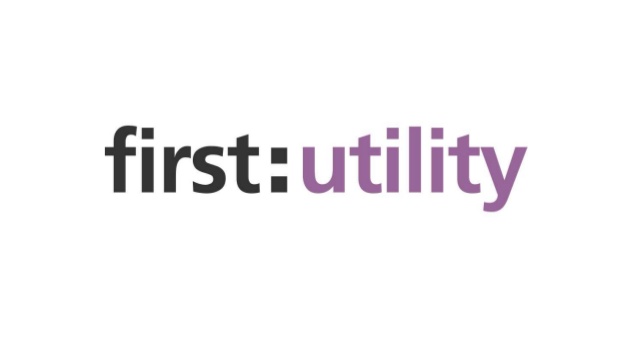It's a common and understandable frustration: you're researching a solution online, diligently trying to understand what it entails, and then you hit a wall. No pricing information, no clear answers on common pitfalls, just a request to "contact us." This lack of transparency often leaves you feeling like the company is hiding something, and frankly, it can be infuriating.
When it comes to powerful, open-source enterprise search platforms like Apache Solr, it's easy to assume that because the software is free to download and use, it comes without complications. This couldn't be further from the truth. While you won't pay licensing fees for Solr itself, the reality of implementing, managing, and optimizing Solr for enterprise-grade performance, scalability, and reliability reveals a much more nuanced picture that includes significant investments and a range of potential challenges.
At its core, Apache Solr is a sophisticated platform, and modern versions incorporate complex capabilities such as Parallel SQL queries, auto-scaling, neural search, vector search, and Retrieval-Augmented Generation (RAG) integration. This increasing sophistication inherently raises the technical bar for successful implementation, optimization, and ongoing maintenance. You simply cannot effectively manage Solr for mission-critical applications without access to highly specialized knowledge, which translates directly into costs and potential problems if not addressed.
This guide aims to shed light on the "elephants in the room" concerning Apache Solr, proactively addressing its inherent complexities, limitations, and operational demands. By being transparent about these challenges, we empower you with knowledge, build trust, and help you build a more informed strategy for a successful Solr deployment. After all, as consumers, we expect answers, and our loyalty is to the honest and open teacher focused on our problems.
The "Free" Myth and The Reality of Solr's Inherent Challenges
The biggest misconception about open-source solutions like Apache Solr is that they are "free". While there are no direct licensing costs, the Total Cost of Ownership (TCO) for an enterprise-level deployment includes significant investments in specialized expertise, robust infrastructure, and continuous operational effort. Attempting a do-it-yourself (DIY) approach with general IT staff to save upfront can lead to significant long-term expenses due to performance bottlenecks, instability, and the eventual need for expensive external consultants.
So, what are the common problems and challenges you might encounter with Apache Solr?
1. The Steep Learning Curve and Configuration Intricacies
Apache Solr presents a significant initial hurdle due to its complexity and extensive configuration requirements.
- Initial Complexity: Solr is described as a "huge and complex project" with an "initially steep learning curve". Effective deployment demands "deep knowledge of indexing, sharding, and replication," and development teams must understand "query syntax, schema design, and relevancy tuning".
- Overwhelming Options: While flexible, the sheer volume of configuration options for features like text analysis, caching, and query parsers can be overwhelming. Achieving optimal performance requires meticulous tuning, which is not straightforward.
- Documentation Challenges: The documentation, though comprehensive, is often "dense" and "more technical," posing a challenge for beginners. Best practices for configurations continuously evolve, requiring ongoing effort.
- Cost of Expertise: This complexity creates a substantial need for highly specialized and experienced personnel, leading to significant investment in training or costly hiring of specialized talent. The required skills are niche and not widely available.
- Schema Design and Core Configuration: Transitioning to a configured schema for production requires a deep understanding of field types and analysis processes. Customizing text analysis and managing external files for stopwords/synonyms add to configuration burden. Implementing security features (pluggable authentication/authorization) adds significant configuration and operational complexity.
2. Performance and Scalability Bottlenecks in High-Volume Environments
Achieving and maintaining optimal performance and scalability, especially under high data volumes and query loads, is a complex endeavor requiring meticulous tuning and continuous oversight.
Memory Management and JVM Tuning:
- Heavy Memory Reliance: Solr "relies heavily on memory for caching frequently used data". Allocating too much JVM heap relative to physical memory can lead to "paging," severely degrading performance. Best practice suggests allocating "50–60% of your physical memory to JVM heap".
- Off-Heap Memory Challenges: DocValues are disk-backed but accessed via mmap (memory-mapped I/O), consuming off-heap virtual memory. This can lead to "Mapped Buffer Exhaustion" and "OutOfMemory errors even when heap looks fine," making diagnosis difficult as traditional monitoring often focuses only on JVM heap.
- Garbage Collection (GC) Tuning: GC can cause "significant performance issues if not configured correctly". Tuning parameters for G1GC (for larger heaps) or Parallel GC (for smaller heaps) is crucial, and requires regular review of GC logs.
Indexing Efficiency and Data Lifecycle Management:
- Frequent Updates: In high-update environments, "frequent updates" lead to "excessive I/O operations, memory mapping overhead," and potential performance degradation. Each commit or flush writes new Lucene segments, and if not aggressively merged, leads to an "accumulation of many small segments". A high number of segments slows down search queries.
- Near Real-Time (NRT) Trade-offs: Achieving NRT indexing introduces a significant trade-off with query performance and resource consumption due to constant background segment creation and merging. This background activity competes with query processing, potentially increasing query latencies.
- Over-indexing: It's crucial to "avoid over-indexing" by only indexing fields required for search and filtering, and minimizing dynamic fields.
- Atomic Updates: Solr's atomic updates often involve re-indexing the entire document internally, which can be resource-intensive.
- Multivalued Field Limitation: It is not possible to "delete particular one value of a list" once indexed.
Resource Allocation and Continuous Monitoring:
- Hardware: Using SSDs (Solid-State Drives) is highly recommended for Solr data due to faster read/write speeds crucial for efficient indexing. Sufficient CPU cores are needed for concurrent indexing.
- Proactive Monitoring: This is essential and includes monitoring cache hit rates, JVM memory, and system-level metrics. Integrating Solr's JMX metrics into external monitoring can add complexity but is vital for proactive management. Solr's optimal performance profile is dynamic, requiring continuous observation and adjustment.
3. Core System Limitations and Advanced Query Complexities
Solr has specific technical limits and architectural biases that can pose challenges for certain enterprise use cases.
- Specific Technical Limits:
- 2.1 Billion Records Limitation: Per index on each node.
- 1024 Max Boolean Clause Limit: Can restrict query complexity.
- Field Name Policy Restrictions: Field names must be alphanumeric/underscore only, cannot start with a digit, and reserve leading/trailing underscores.
- Incorrect SORT Results: For tokenized text fields.
- Complex Aggregations and Structured Queries: Solr is "optimized for full-text search rather than structured queries". "Complex joins and aggregations may require workarounds or external processing".
- Inconsistencies with Shard Features: For advanced functionalities like "more like this" or grouping on multivalued fields across shards, inconsistencies can be a "pain".
- Constant-Scoring Queries: Range, prefix, and wildcard queries are "constant-scoring," meaning they do not leverage relevance factors like Term Frequency (TF) or Inverse Document Frequency (IDF).
- Rate Limiting Granularity: Operates at the "instance (JVM) level, not at a collection or core level," limiting granular control in multi-tenant environments.
4. Operational Overhead and Maintenance Demands
Maintaining Apache Solr in an enterprise environment involves significant operational overhead, particularly due to its distributed architecture and external dependencies.
- Apache ZooKeeper Dependency: SolrCloud "manages its scalability through Zookeeper, which manages node coordination, leader election, and failover processes". This dependency "introduces additional complexity and maintenance burden" as you must also maintain ZooKeeper efficiently. For high availability, a dedicated ZooKeeper ensemble with at least 3 nodes is recommended. An unstable ZooKeeper can lead to Solr cluster instability.
- Distributed System Management and Fault Tolerance:
- Explicit Configuration: Apache Solr "requires explicit configuration to scale efficiently, including managing leader shards and replica distribution". This implies ongoing manual effort for optimal performance and resilience.
- Slow Recovery: If a Solr replica becomes unavailable, "recovery may be slow if it has missed a large number of updates". Replication can halt if the leader is down or due to network partitioning.
- High Availability & Consistency: "Scaling is not free," and ensuring high availability and data consistency across distributed nodes under high load requires proper configuration and monitoring, consuming processing power, network resources, and time.
- Common Implementation Pitfalls and Troubleshooting Scenarios:
- Configset Deployment Errors: Issues like "409 Conflict error" when deploying Solr 9 configset to an un-upgraded index, or the "duplicate documents issue" with Solr 7 to Solr 8 upgrades if the _root_ field is present, leading to "index pollution".
- Highlighting Errors: "Internal Solr server error 500: Field indexed without offsets, cannot highlight" due to highlighter default changes in Solr 9.
- Schema Field Renaming: Not straightforward and typically requires a full reindexing of data, a substantial operational burden for large datasets.
- Large Attachment Indexing: Solr has "difficulty handling large attachments" due to timeout limits, memory issues (Tika backend), database limitations, HTTP POST request size limits, and a maxFieldLength limit that can truncate extracted text.
- Multilingual Support: "Internal Solr error with Eastern European languages" related to ICUCollationField and docValues settings, leading to ArrayIndexOutOfBoundsException.
- Dev Environment Data Pollution: Development environments can easily write to production indexes if default configurations lead to shared indexes, causing duplicate results or content deletion.
- Concurrency and
write.lockConflicts: The "Lock held by this virtual machine" error occurs when indexing and building a suggester simultaneously, leading to write.lock conflicts.
5. Integration Challenges and Feature Gaps
Integrating Solr into existing enterprise ecosystems and leveraging advanced features like Machine Learning can present distinct challenges.
- Data Integration (ETL) Complexities:
- Data Alignment and Synchronization: The "biggest challenge is definitely aligning data," especially when "source systems change but then don't provide updated changes".
- High-Throughput Updates: While initial bulk synchronization can be fast, subsequent incremental updates can become "very slow" if processed "one by one". Solutions involve implementing "bulk inserts and updates".
- Schema Changes and Re-ingestion: Achieving "Solr Schema Changes, without downtime" and efficiently "Handling full indexing — Delete all data and reingest" are key challenges.
- Machine Learning and AI Integration Landscape:
- Lagging in AI/ML Investment: Apache Solr is "lagging behind other search technologies in regards to AI and Machine Learning investment".
- NLP Tooling: There's a "lack of NLP tooling in the Java ecosystem since nearly all modern NLP work is done in Python". Using state-of-the-art NLP models often requires configuring a remote service, introducing complexity and latency.
- Future Work & Commercial Plugins: Many advanced AI/ML features (Neural Highlighter, End-to-End Neural Search, LLM Query Rewriter, RAG, Multi-Valued Vectors) are listed as "future work" or require sponsorship for open-source availability.
- Comparative Considerations with Alternative Search Platforms:
- Ease of Deployment: Elasticsearch is "traditionally being easier to get started with" and "automatically manages data distribution across nodes," unlike Solr which "requires more manual configuration for scaling". OpenSearch also "automatically balances shards and nodes" reducing overhead compared to Solr's ZooKeeper dependency.
- Real-time Indexing: Elasticsearch is generally considered "better for real-time updates".
- Log/Data Analysis: Elasticsearch is "widely used" for log and data analysis (ELK Stack), whereas Solr "often requires additional tools for visualization and data ingestion".
- Documentation: Elasticsearch's documentation is "well-structured and beginner-friendly," while Solr's is "thorough but more technical".
















































